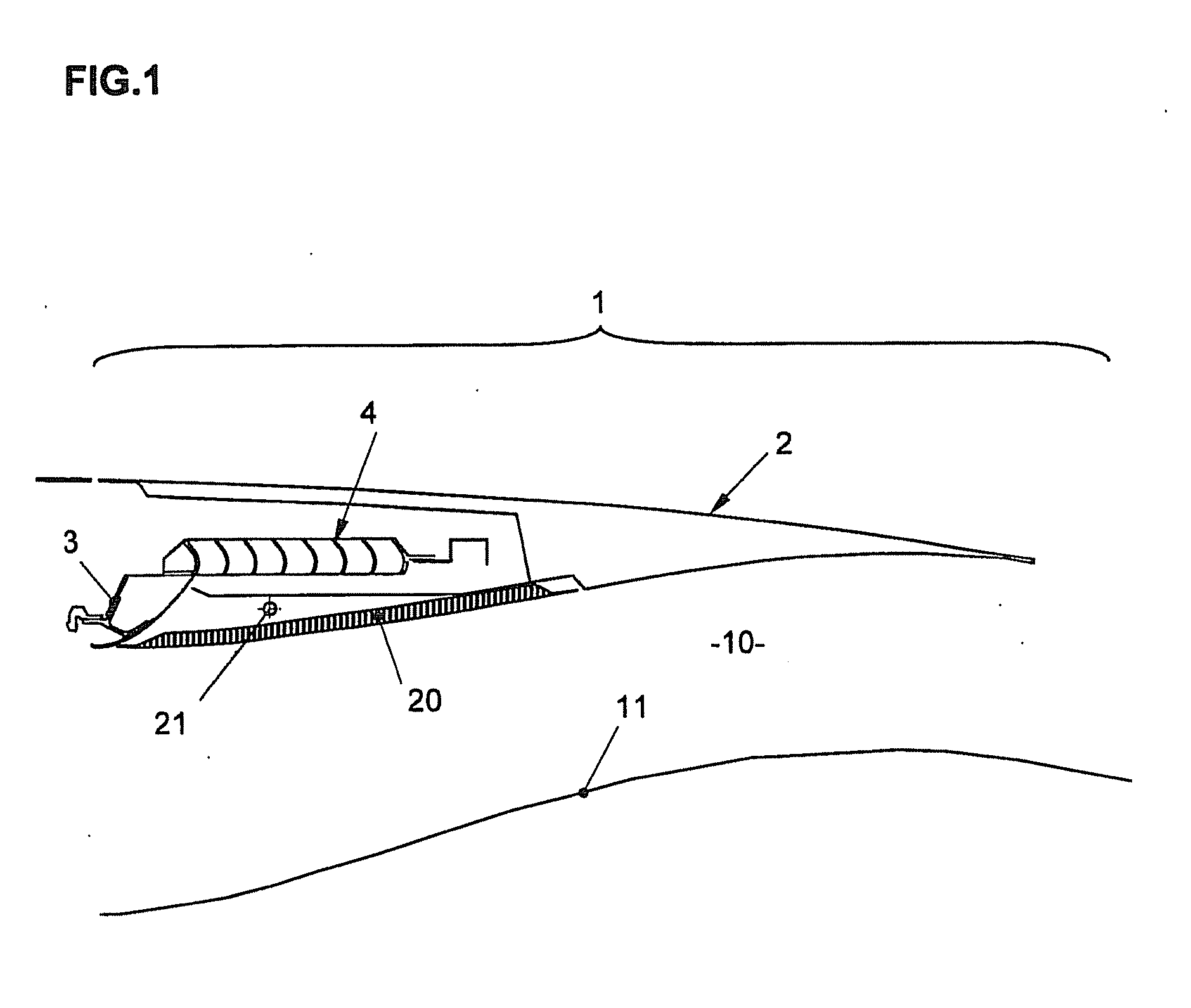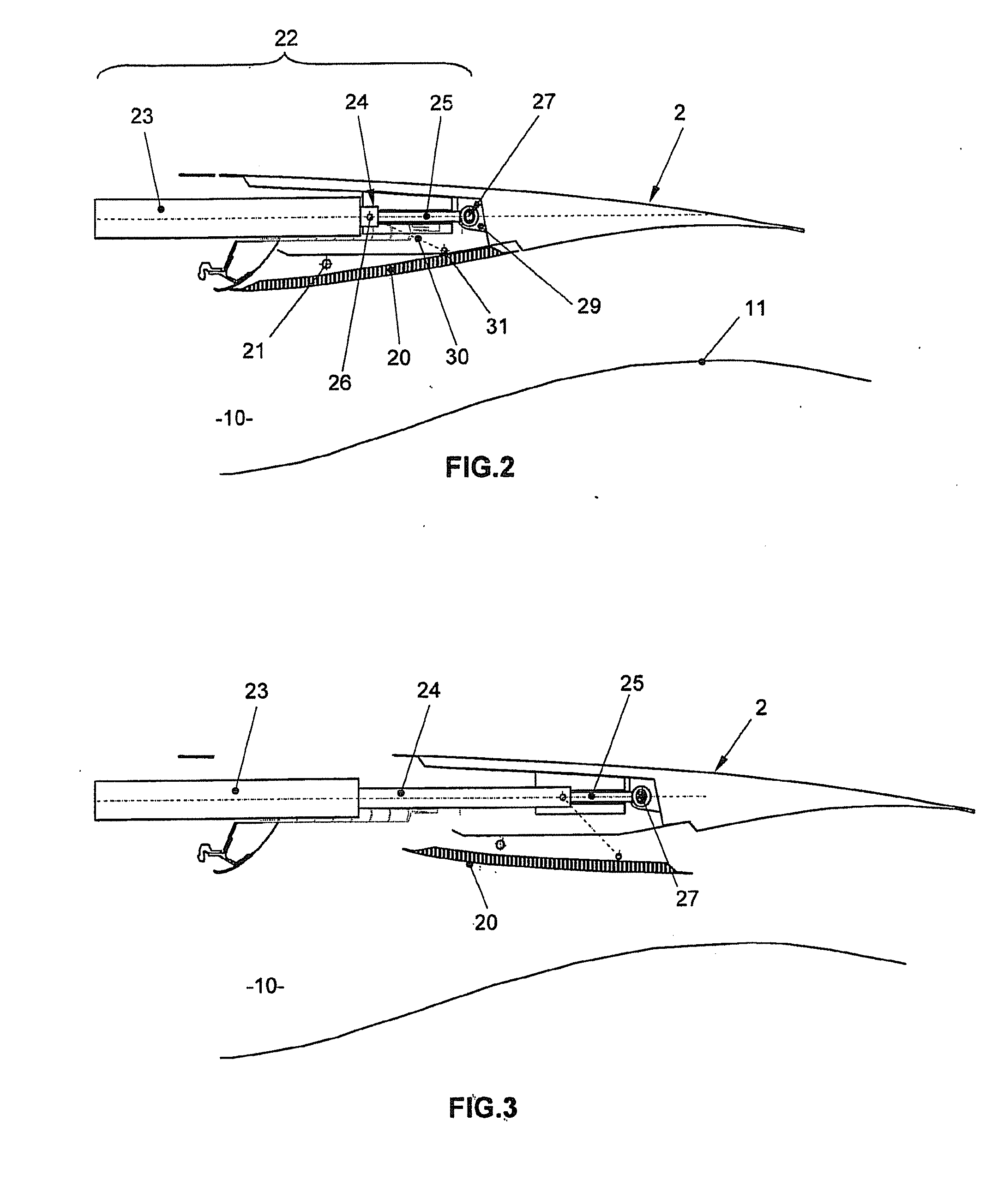Thrust reverser with grids for jet engine
a jet engine and thrust reverser technology, applied in the field of thrust reversers, can solve the problems of increasing the pressure in the engine, difficult to manage the speed of the turbofan, and numerous aerodynamic disturbances, and achieve the effect of maintaining the simplicity and lightness of means
- Summary
- Abstract
- Description
- Claims
- Application Information
AI Technical Summary
Benefits of technology
Problems solved by technology
Method used
Image
Examples
Embodiment Construction
[0049]In a manner known per se, the thrust reverser 1 shown in FIGS. 1 to 12 is associated with a turbofan (not shown) and comprises an external nacelle which, together with a concentric internal structure 11, defines an annular flow duct 10 for a secondary flow stream.
[0050]A longitudinally sliding cowl 2 is formed by two semicylindrical portions mounted on the nacelle so as to be able to slide along tracks (not shown).
[0051]An opening provided with fixed deflection grids 4 is formed in the external nacelle of the thrust reverser 1. In a situation with direct thrust of the gases, this opening is closed by the sliding cowl 2 and it is exposed, in a thrust reversal situation, by a longitudinal translational movement of the sliding cowl 2 in the downstream direction (with respect to the direction of flow of the gases).
[0052]A plurality of reversal flaps 20, distributed over the circumference of the cowl 2, are each pivotally mounted, by an upstream end about a hinge pin 21, to the sli...
PUM
 Login to View More
Login to View More Abstract
Description
Claims
Application Information
 Login to View More
Login to View More - R&D
- Intellectual Property
- Life Sciences
- Materials
- Tech Scout
- Unparalleled Data Quality
- Higher Quality Content
- 60% Fewer Hallucinations
Browse by: Latest US Patents, China's latest patents, Technical Efficacy Thesaurus, Application Domain, Technology Topic, Popular Technical Reports.
© 2025 PatSnap. All rights reserved.Legal|Privacy policy|Modern Slavery Act Transparency Statement|Sitemap|About US| Contact US: help@patsnap.com



